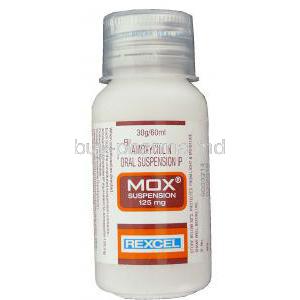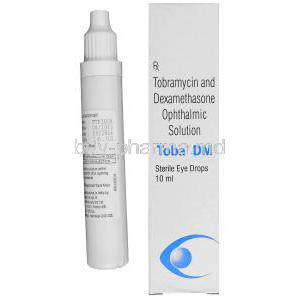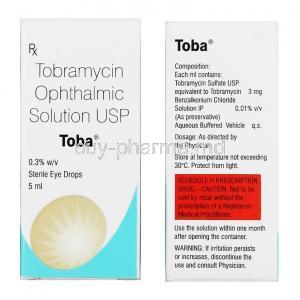Vigamox Eye Drop
- Introduction
- Composition
- Uses
- Â
- Off-Label Use
- How It Works
- Dosage and Administration
- Common Side Effects
- Â
- Serious Side Effects and Adverse Reactions
- Interactions
- Warnings and Precautions
- Contraindications
- Â
- Careful Administration
- Important Precautions
- Administration to Elderly
- Administration to Pregnant Women and Nursing Mothers
- Â
- Administration to Children
- Overdosage
- Handling Precautions
Introduction
Vigamox Eye Drop is a remedy designed to tackle bacterial eye infections effectively. Prompt treatment is essential to prevent these infections from worsening and safeguarding your eyesight. Addressing these issues is vital to avoid any long-term damage to your eyes.
Composition
Vigamox Eye Drop is centered around Moxifloxacin Hydrochloride, an antibiotic from the fluoroquinolone class. This active component is skilled at eliminating a range of bacteria by blocking the crucial enzymes needed for DNA replication. Supporting this antibiotic, are different inactive ingredients carefully chosen to serve specific functions. These components include stabilizing agents, viscosity enhancers, and pH adjusters, all working to improve the effectiveness of the medication, ensure it's compatible with the eyes, and enhance patient comfort.
Uses
- Treating Bacterial Conjunctivitis: Doctors commonly recommend Vigamox Eye Drop to treat conjunctivitis, a typical eye condition known for symptoms like redness, itching, and discharge. Its ability to quickly eliminate the bacteria causing the infection speeds up recovery, easing discomfort and preventing its spread.
- Approved Uses for Eye Infections: Apart from conjunctivitis, this versatile medication is approved for treating other bacterial eye infections. These include ulcers and blepharitis conditions that require a potent antibiotic with broad-spectrum activity.
- Addressing a Range of Bacterial Infections: Moxifloxacin Hydrochloride can effectively target a range of bacterial pathogens. This includes bacteria like Staphylococcus aureus and Pseudomonas aeruginosa and rarer strains that are often resistant to other antibiotics. Therefore, Vigamox Eye Drop is a tool for ophthalmologists to combat various bacterial infections effectively.
Off-Label Use
Exploring how Vigamox Eye Drops could be used beyond its usual purpose reveals a wide range of potential therapeutic benefits. Scientists are looking into how effective this medication could be in treating eye conditions not officially listed as approved uses. This research is supported by a growing body of evidence indicating that Vigamox might help manage diseases like uveitis or meibomian gland dysfunction, especially when bacterial involvement is suspected but not the main issue. Studies and trials gradually confirm the potential of using Vigamox Eye Drops for off-label purposes. Although these research efforts are still in their stages, they suggest that the drug could have broader therapeutic applications, leading to a better understanding of its capabilities and opening up new possibilities for innovative treatments.
How It Works
Vigamox Eye Drop works effectively against bacteria by targeting enzymes like DNA gyrase and topoisomerase IV. This action hinders DNA replication and transcription, ultimately eliminating the infection. This treatment method offers a benefit in treating eye infections by providing broad coverage against various bacterial strains, even those resistant to other antibiotics. The advantages of using Moxifloxacin for treating eye infections include its effectiveness, favorable safety profile, and low likelihood of developing resistance, making it a valuable tool for ophthalmologists in their treatment strategies.
Dosage and Administration
The recommended dosage of Vigamox Eye Drop varies depending on the age group, emphasizing the importance of treatment. For adults and children aged three and above, the usual routine involves applying one drop in the affected eye(s) three times a week. However, dosage adjustments may be necessary based on the seriousness of the infection and how well the patient responds to treatment. It is crucial to apply eye drops to achieve optimal therapeutic results. Patients should wash their hands before tilting their heads back and gently pull down the lower eyelid to form a small pocket.
Care should be taken to ensure that the dropper does not come into contact with the eye or any other surface to prevent contamination. After administering the drops, closing the eye and gently pressing on the tear duct can aid absorption. Suggestions for Maximizing Effectiveness: To enhance treatment effectiveness, patients should follow their regimen consistently without interruptions, refrain from wearing contact lenses if their doctor advises, and maintain good ocular hygiene throughout the treatment period.
Common Side Effects
Although Vigamox Eye Drop is usually well received, some people might encounter side effects like temporary eye irritation, itching, or redness. These issues typically go away on their own without needing any treatment.
- Ways to Deal with Minor Side Effects: Patients facing discomfort can often alleviate these symptoms by using simple methods such as applying a cold compress or ensuring the eye stays moist with artificial tears if their doctor thinks it's necessary.
- When to Consult a Doctor: It is crucial for patients to seek medical help if they have severe reactions like significant swelling, intense pain, or vision changes. These signs could indicate a severe underlying problem or an adverse reaction to the medication that requires immediate attention.
Serious Side Effects and Adverse Reactions
While Vigamox Eye Drop is effective for eye infections, some patients may experience severe side effects. It is crucial to identify these adverse reactions. Suppose you notice eye irritation, prolonged redness, changes in vision, or any signs of an allergic response. Stop using the medication immediately and seek advice from a healthcare professional. Treatment options may involve stopping the medication, switching to an antibiotic, or receiving specific interventions to manage the adverse reaction.
Interactions
The effectiveness of Vigamox Eye Drops may be impacted by how it interacts with medications. When using drugs, especially those processed by the liver or influencing the QT interval, it's essential to weigh the risks and benefits carefully. While interactions with over-the-counter medications and dietary supplements are rare, it's advisable to consult a healthcare provider to prevent any effects on the medication's effectiveness.
Warnings and Precautions
- Precautionary Steps for Allergic Reactions: Individuals who have reacted to moxifloxacin or other fluoroquinolones should refrain from using Vigamox Eye Drops. Symptoms of a response may include skin rash, itching, swelling, severe lightheadedness, and difficulty breathing. Immediate medical attention is necessary in cases.
- Guidelines for Usage in Specific Groups: When using Vigamox Eye Drops, extra care should be taken in individuals to QT interval prolongation, pregnant or breastfeeding women, and pediatric populations. It is essential to balance the risks and benefits for safety purposes while ensuring thorough monitoring.
Contraindications
Certain situations and cases exist where the application of Vigamox is not recommended. This encompasses individuals with a confirmed hypersensitivity to moxifloxacin, other quinolones, or any active components in the preparation. Additionally, it is essential to exercise caution when contemplating its usage in patients with a history of tendon issues associated with fluoroquinolone use. Familiarity with and diligently following these restrictions is vital for safeguarding well-being and efficiently treating bacterial eye infections.
Careful Administration
Administering Vigamox Eye Drops requires attention, especially when dealing with sensitive individuals. It's essential to assess the patient's eye health, potential allergies, and any existing conditions that could impact the medication's effectiveness and safety. Adapting the dosage and administration methods to suit each person's needs is essential to ensure the treatment works well without posing risks. For example, patients with kidney issues may not need dosage adjustments because Vigamox is minimally absorbed systemically. It's still crucial to monitor them closely.
Important Precautions
- Preventing Eye Drop Container Contamination: To avoid the risk of infection, patients need to be taught how to apply eye drops, making sure that the container's tip doesn't touch the eye, eyelids, or fingers. This step is crucial for keeping the solution sterile.
- Safety Measures for Contact Lens Wear: It's important to caution patients against wearing contact lenses if they show conjunctivitis or other bacterial eye infections. Vigamox Eye Drop should not be used with contact lenses. Bacteria can stick to the lens surface, worsening the infection or causing infections.
Administration to Elderly
Elderly patients require adjustments and monitoring, especially considering their existing eye conditions and an overall decline in physical capabilities. Although Vigamox Eye Drop is typically safe for the elderly, healthcare providers should be cautious in adapting treatment plans to suit their metabolism and additional health issues. It is recommended to schedule checkups to track the treatment progress and watch out for potential side effects.
Administration to Pregnant Women and Nursing Mothers
Administering Vigamox Eye Drops to women and nursing mothers should be approached cautiously. Although data indicates a low likelihood of adverse effects due to minimal absorption into the bloodstream, the safety profile for use during pregnancy and breastfeeding remains inconclusive. Healthcare professionals must assess the possible advantages versus risks and explore alternative treatment options as needed. When Vigamox is deemed essential, monitoring for any adverse reactions in both the mother and baby is advisable.
Administration to Children
Administering Vigamox Eye Drop to patients involves following specific dosage instructions carefully to ensure safety and effectiveness. The recommended dose for children, including newborns, usually matches that for adults, highlighting the drug's range of uses. However, the important factor is adjusting the dosage based on the child's age, weight, and the seriousness of the infection. Research has confirmed Vigamox's safety in children by proving its ability to treat eye infections effectively without causing significant side effects. Monitoring progress during treatment and making any necessary adjustments to the treatment plan is crucial.
Overdosage
While it's rare for overdosing on Vigamox Eye Drop to happen because it's applied topically, knowing the signs is essential. Look out for signs of tearing, eye irritation, or redness. If you notice these symptoms, rinse your eyes with water. Stop using the drops immediately. Treating an overdose mainly involves providing support and easing any discomfort. If there's an overdose, it's best to consult a healthcare professional to decide if more treatment is needed.
Handling Precautions
- To keep Vigamox Eye Drop effective, it is best stored in a dry place at room temperature and shielded from light. Avoiding temperatures and direct sunlight is essential as they can weaken the medication's healing properties.
- Proper handling and disposal are crucial to prevent contamination. Patients should be taught how to apply eye drops and reminded not to let the dropper tip touch any surface, including their eyes. Maintaining hand hygiene before and after use is essential. When getting rid of unused medication, ensure you follow local regulations for environmental safety.


















